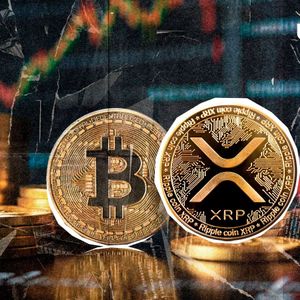US Dollar Warning: ING Sees More Downside Risks Amid Deficit Worries
5 min read
BitcoinWorld US Dollar Warning: ING Sees More Downside Risks Amid Deficit Worries The financial world is keeping a close eye on the US Dollar . Recent reports indicate the greenback is softening, a move linked significantly to growing concerns over the nation’s budget deficit. This trend isn’t happening in a vacuum; it’s part of a complex interplay of global economic factors. Understanding this dynamic is crucial, especially for those navigating the volatile world of cryptocurrencies, which often reacts to shifts in major fiat currencies like the dollar. Why is the US Dollar Softening? Several factors contribute to the current state of the Currency Market , but the spotlight is increasingly on the fiscal health of the United States. A large and persistent budget deficit can weigh on a currency for fundamental economic reasons. Increased Borrowing: To finance a deficit, the government issues more debt (Treasury bonds). A higher supply of debt can potentially reduce its appeal or require higher interest rates to attract buyers, impacting broader market sentiment. Inflation Concerns: Large deficits can sometimes fuel concerns about future inflation, as they might imply increased money supply or future debt monetization. Inflation erodes purchasing power, which can weaken a currency’s value over time. Reduced Foreign Investor Appetite: While US debt is generally considered safe, persistently large deficits can, in the long run, make some foreign investors hesitant, potentially decreasing demand for dollar-denominated assets. Comparison to Other Economies: The relative fiscal position of the US compared to other major economies also plays a role. If other countries appear to have stronger fiscal management, their currencies might become relatively more attractive. Beyond the deficit, other elements influencing the US Dollar include the Federal Reserve’s monetary policy (interest rates, quantitative easing/tightening), global economic growth prospects, geopolitical stability, and market risk sentiment. When global risk appetite is high, investors might move away from safe-haven assets like the dollar towards riskier investments. What Downside Risks Does ING Identify? According to analysts at ING , the current softening of the dollar is not just a temporary blip. They point to specific factors suggesting that more downside risks remain for the currency. ING’s perspective often considers macro-financial trends and how they interact. While the precise details of their latest analysis would be in their specific reports, the general arguments for continued dollar weakness often revolve around: Persistent Fiscal Challenges: The budget deficit is not a short-term issue. Ongoing government spending and revenue shortfalls create a structural headwind for the dollar. ING likely emphasizes that without concrete steps to address the deficit, the pressure will continue. Relative Monetary Policy: Expectations about when and how much the Federal Reserve might cut interest rates compared to other central banks can weaken the dollar. If the Fed is expected to ease policy more aggressively or sooner than others, it makes dollar-denominated assets less attractive for yield-seeking investors. Global Recovery or Stability: If other major economies show signs of strengthening or if global risks subside, the demand for the dollar as a safe haven decreases. ING might foresee scenarios where international economic conditions improve, reducing the dollar’s appeal. Technical Factors: Currency markets are also driven by technical analysis and market positioning. ING’s view could be influenced by technical indicators suggesting further downward momentum for the dollar. These downside risks suggest that the path of least resistance for the dollar, in ING’s view, is downwards, at least in the near to medium term. How Does This Impact the Forex Market? The Forex market, or foreign exchange market, is where currencies are traded. It’s the largest and most liquid financial market globally. When the US Dollar softens, it has ripple effects across this massive market. Major Currency Pairs: Pairs like EUR/USD, GBP/USD, and AUD/USD tend to rise when the dollar weakens, as it takes more dollars to buy one unit of the other currency. Emerging Market Currencies: Many emerging market currencies are sensitive to dollar strength. A weaker dollar can provide relief to countries with dollar-denominated debt, making it cheaper to service. It can also potentially increase capital flows into these markets as the relative attractiveness of dollar assets diminishes. Commodities: Commodities like oil and gold are often priced in dollars. A weaker dollar makes these commodities relatively cheaper for buyers using other currencies, potentially increasing demand and prices. Global Trade: Exchange rates influence the cost of imports and exports, affecting trade balances between countries. Traders and investors in the Forex market constantly analyze these factors, including reports from institutions like ING , to anticipate currency movements. Actionable Insights for Navigating Currency Shifts Given the current outlook and the warnings from institutions like ING , what steps can market participants consider? Firstly, stay informed. Monitor economic data releases, particularly those related to the US budget, inflation, and employment. Pay attention to statements from the Federal Reserve and other major central banks. Follow analysis from reputable financial institutions like ING . Secondly, understand your exposure. If you hold assets denominated in dollars, recognize that a weakening dollar affects their value in terms of other currencies. If you are involved in international business or have foreign investments, currency fluctuations directly impact your bottom line. Thirdly, consider diversification. Holding assets across different currencies and asset classes can help mitigate the risks associated with the decline of a single currency. Finally, for those in the crypto space, remember that while cryptocurrencies operate independently of central banks, their prices are often influenced by global liquidity and risk sentiment, which are tied to major currency movements. A weaker dollar can sometimes correlate with increased risk appetite, potentially benefiting assets like Bitcoin, though this relationship is not always direct or consistent. Conclusion: The Path Ahead for the US Dollar The softening of the US Dollar , fueled by concerns over the Budget Deficit and other macro factors, is a significant development in the global financial landscape. Analysis from institutions like ING reinforces the view that the dollar faces continued downside risks. This situation impacts the vast Forex market, influencing everything from major currency pairs to commodity prices and global trade dynamics. While the future is never certain, understanding the pressures on the dollar and the potential implications is vital for investors, businesses, and anyone with exposure to the global economy. Keeping a close watch on economic indicators and expert analysis will be key to navigating the potential shifts in the Currency Market ahead. To learn more about the latest Forex market trends, explore our article on key developments shaping the US Dollar and global currency liquidity. This post US Dollar Warning: ING Sees More Downside Risks Amid Deficit Worries first appeared on BitcoinWorld and is written by Editorial Team

Source: Bitcoin World



